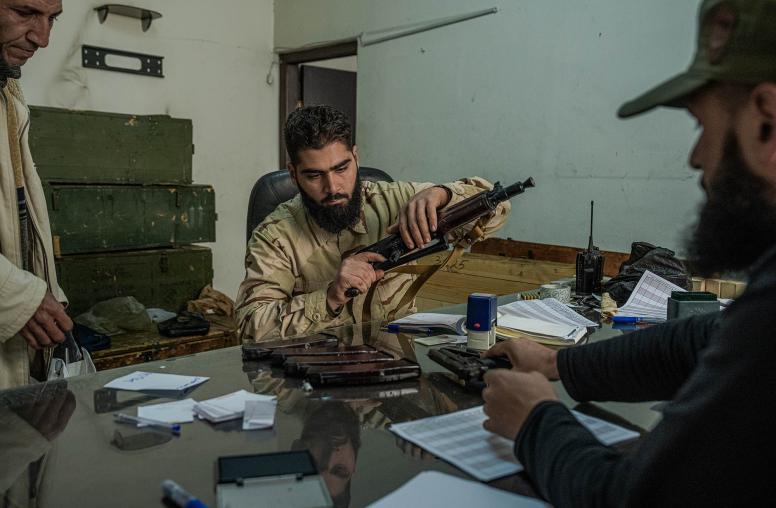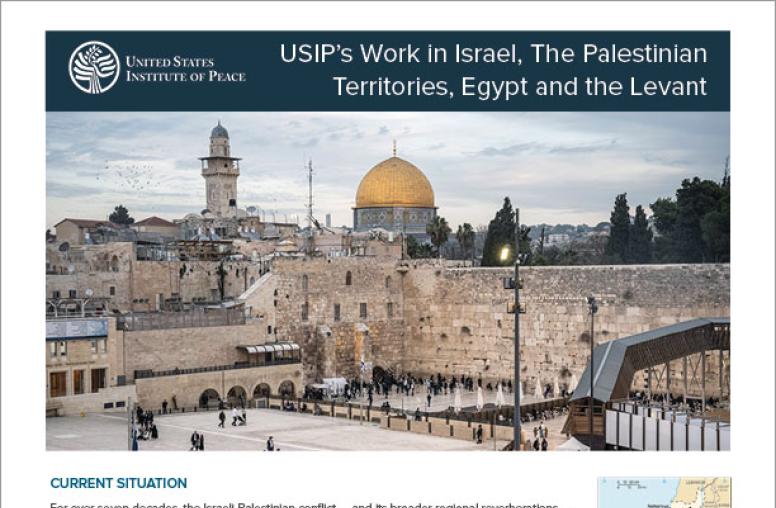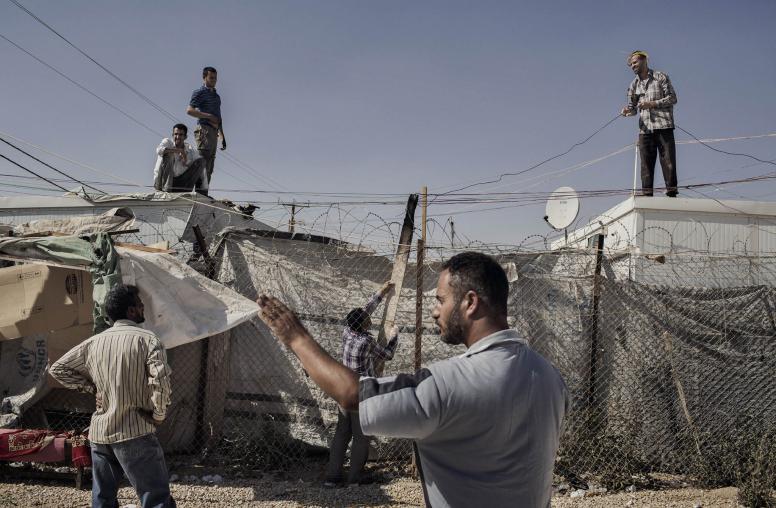From Nazis to ISIS: Women’s Roles in Violence
History Can Aid Understanding of Gender in Conflict
From the Nazi regime of the 1940s through the Islamic State of today’s Middle East, an obscured element of history runs though the phenomenon of violent extremism: the participation of women. Contrary to the classic image of women as victims or, at least more recently, peacemakers, new research shows how women can stoke, support and sometimes directly join in violent action, scholars said in a discussion at the U.S. Institute of Peace. Understanding the little-examined role of women in radical, religious-oriented movements or in a state liquidating a minority group, may be a key to deterring such violence, they said.

“Too often our stereotypical portrayal of women as peaceful and men as violent harkens to our age-old tendency to divide the world into simple binaries —masculine-feminine; protector-protected; combatant-caregiver,” said Kathleen Kuehnast, the director of gender policy and strategy at USIP. As a result, she said, “the complex gender relationships that actually socialize violence into our everyday lives—and thus our interventions to end violence—often lack nuance and the test of reality.”
As students of the Holocaust, ISIS and the Afghan Taliban, as well as the earlier struggle in Afghanistan against the Soviet invasion of the 1970s, the three scholars in the March 1 discussion identified some common elements of women’s participation. In each, women felt their role in the world enlarged by becoming part of an organization with historic objectives. Generally, even within stereotypical gender roles such as clerks and nurses, women had important support tasks and were sometimes encouraged to act on their own initiative. Finally, women were socialized to accept violence in the same way as men, with mechanisms such as the religious narratives constructed by leaders or the demonization of a group as infidels or dangerous inferiors.
Women have been invisible in both war and peace.
In two decades of studying the Holocaust, Wendy Lower, a history professor at Claremont McKenna College in California, said many forms of gender bias guided her away from examining the role of women in the Nazi killing machine. The existing literature focused on the small number of uniformed female camp guards, and the regime’s own propaganda held up women as exalted breeders of Aryan children. Eventually, research on the mass murders outside of camps, where half the victims of the Holocaust were exterminated, led her to reconsider the role of women.
“We assume, with gender bias, that women are nurturers,” said Lower, who also is an acting director of a center at the U.S. Holocaust Memorial Museum. “Genocide is women’s business, too.”
In research for her book, Hitler’s Furies: German Women in the Nazi Killing Fields, Lower said she came to understand more clearly the scope of the social system that facilitated the Holocaust. The history of that genocide had written out half the population that was female. The half million women who helped colonize Eastern Europe and run the death machine as clerks, nurses and SS auxiliaries, were part of a post-World War I baby boom educated in schools in the 1930s, where they were imbued with Nazi ideology.
Volunteering to work in the “colonial East” was a way to realize ambitions, fulfill dreams and gain social mobility, Lower said. As young, single women they found excitement and a sense of mission in serving the Reich. Under Nazism, “the private became political.” She discovered it was not uncommon to find women who admitted to specifically targeting children to prove to men their commitment to Nazism.
“Blind spots, taboos obscure history,” Lower said. “This is why it’s so difficult to study and to understand.”
Women’s incorporation in “jihadi” organizations is on the rise for some of the same reasons, said Hamoon Khelghat-Doost, a PhD candidate at the National University of Singapore who has done two years of field work on women in extremist groups, including ISIS and al-Qaida.
“Recruiters say to the niqab-wearing woman in France who can’t go to the theater because it’s against the law, ‘Come, you’ll be head of the police, a teacher, a respected figure.’” Furthermore, by moving to ISIS’s self-declared caliphate, they are leaving behind the possibility of living as emancipated women in the West for the “divine redemption” of life under Islamic rule. Khelghat-Doost said groups like al-Qaida, which he called operations-based, have lower levels of women’s involvement than “state-building organizations” such as ISIS.
Women in these terrorist groups work in security, enforce morals laws, die as suicide bombers, torture other women and manage sex slaves. They serve as teachers, doctors, tax collectors, and they offer legitimacy to ISIS by acting as online recruiters and simply by raising families within its territory, Khelghat-Doost said. ISIS is somewhat flexible on gender roles, while rigid on separation of the sexes and generally barring them from combat, he noted.
“There are similarities with the Nazis,” he said. “They portray themselves as something extraordinary,” as people who believe they are changing history.
Afghanistan, after 40 years of warfare, has seen women’s roles in violence go through phases, said Belquis Ahmadi, a senior program officer at USIP. Interviews with Afghan women for a USIP study she co-authored last year, showed widespread activity by women during the Soviet invasion, when women engaged in combat as well as providing intelligence and logistical support.
They saw their role as being part of national and religious defense, she said, which required mobilization of the entire society. Limited education and acceptance of interpretations of the Koran by extremist clergy has many women today supporting their sons’ joining the Taliban and regretting their own more-limited role in the ongoing war, she said. Perceived as non-threatening, some are useful as spies and for logistical support.
“The narratives of violent extremist groups are powerful and resonate with ordinary Afghans,” she said.
The history outlined by Lower provides a reminder that the current era of violent extremism is not unique, Kuehnast said, and that none of the situations discussed by the panel that swept women into violence occurred in a historical vacuum. Countering violent extremism requires understanding those female roles, she said.
“Women have been invisible in both war and peace,” Kuehnast said. “Even when they are destructive, they’re still invisible.”


